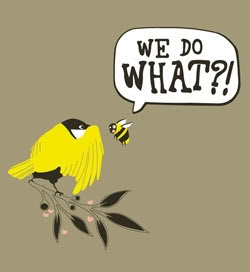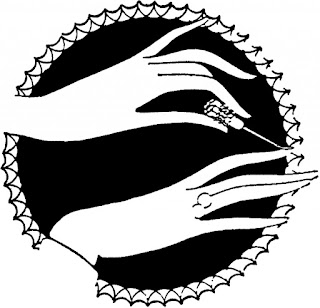BLAZE STARR
publicity photo Image downloaded from New York Public Library digital collection
Fannie Bell Fleming
1932 – 2015
I've long wanted to elect Blaze Starr to my pantheon of Mistresses, not because she was a Burlesque Queen in the 1950's, but because of her unlikely and very public affair with married politician Louisiana Governor Earl Kemp Long in 1959-1960. Their relationship ignited such controversy, not just because he was married; it was the combination of these two personalities that turned their one year affair into international news. Their relationship ended right after he was re-elected because he died.
Born in 1932, just a few years before Marilyn Monroe, whom Fannie Bell watched, the girl who would become a famous star on the burlesque circuit was West Virginia poor and would die there at her home at the age of eighty-three. (Her beloved dog died a couple hours later!) The oldest of eleven children, her coal miner father died of Black Lung, leaving her mother with all those children to raise. Fannie Bell left home to make it in the world and never did forget her family in the process. She needed to send money home and did. What was humble and West Virginia in her served her well. She brought comedy to her act, was famous for her inventive use of props that included smoke and fire, kept things decent by today's standards- no hard core porn, and connected with her audiences. Fannie Bell's humanity shone through. She was genuine, a real person, although some reviewers of her memoir felt she had held back some.
For years she traveled the Burlesque Circuit, appearing at various clubs for a week or two, then moving on. Burlesque audiences were only satisfied by seeing new women, new acts. In the 1950's through the 1970's Blaze was at the Two-O'Clock Club in Baltimore. It was a club she may have owned. (Some say she did, others that she bought half interest in it for an ex boyfriend.) Upon her death in 2015 the Baltimore Sun Newspaper obituary said she had once been the most famous person in Baltimore.
In 1989 she served as a consultant and acted in a cameo role in a film made about her life called 'Blaze' that starred Lolita Davidovich as Blaze with Paul Newman acting as Governor Long. The film was based on her memoir.
Unfortunately, Blaze's motivation for leaving rural West Virginia may not just have been the need for money, for she was not yet sixteen years old. She may have been gang raped at fourteen or fifteen. She had physically matured early with breasts that filled a DD cup. Being molested or raped as a teen is sadly the story of too many of the women I've posted about here on this blog. What a horrendous way to be introduced to sexuality, to be robbed of choice and authority over one's own body, mind, and spirit.
As for Governor Earl K. Long, there are far more books and articles written about him than there ever were about Blaze. He was a character, even thought of as possibly mentally ill, in his way outrageous, yet he had been serving the people of Louisiana for a very long time. His wife decided he was mentally insane and had him committed, but he sprung himself and got re-elected anyway.
Blaze was married one time to a nightclub owner, Carroll Glorioso, which ended in divorce. She said she knew that men, being men, cheated, and it didn't mean a thing but after he confessed he had cheated, a divorce followed.
Blaze, like many women who succeeded in Burlesque were wary of being supported by men, though they also allowed themselves the benefit of Stage Door Johnnies.
Here is what Leslie Zemekis, author of Behind the Burly Q, a primary reference for this month's posts, wrote:
Excerpt page 280 quoting Blaze Starr :
"In West Virginia there is a lot of spousal abuse. We'd walk through the hills two miles to get to school and kids would have their tales "Daddy beat mommy and he blacked both eyes, broke her ribs." The men would get drunk, then cry and ask for forgiveness." It taught her a valuable lesson. "I would never want to be in position to have someone support me. I would make my own way," she said.
She explained, "Everyone was poor in those years. It was luxury to own a cow. There were no doctors in the area. People rode horses and wagons."
Her mother was a schoolteacher in a one-room school and "Every 18 months a baby would come." Blaze had eleven siblings, one died at six months. She helped raise the others.
***
Fannie Bell was close with her mother who told her whatever she did, do it the best. In the film she comes home to tell her mother that the money she's earning isn't from singing or acting and her mother shows her that she already knows, she's kept the news clippings. Her mother is without negative judgement.
Her only marriage, to nightclub owner Carroll Glorioso, ended in divorce.
Blaze, in her own book, recounted her story about meeting and later having a few dates with the man who would become President of the United States, John F. Kennedy. She said that she and other dancers had met him previously. However it's this passage from Leslie Zemeckis' book that is telling because when the met more officially, Kennedy acted as if it was the first he had ever met her.
Excerpt Page 208 quoting Blaze
"I'd met Governor Earl Long, working the Sho Bar. (New Orleans) Earl was there that night, he had a table. A big club, with a big balcony - everything filled up. People standing at the door. JFK and Jackie came in. I thought. This can't be. Now this cannot be. By then I was a Jackie fan. I come out - they were at Earl's tale. ... Earl told me to be nice to him, 'He's gonna be your next president.' JFK shook my hand as if I'd never seen him before. He said,' Ms. Starr, you were very good tonight. " She replied, "I've been told I'm the very best."
(Jackie was also complimentary)
Twenty minutes later, Jackie left her husband at the clu b "I ain't telling you about the rest of the night, " Blaze said.
***
Blaze was discovered to have what she called a "small heart problem." She retired after having five bypass surgeries, not wanting to die naked on stage. When told her recovery would take a few years she did an enterprising thing. She went rock hunting in North Carolina for rubies and emeralds and learned to cut them. Then she created and sold jewelry.
In 1975 she sold the Two O'Clock Club in Baltimore. Blaze, in her sixties, went back to West Virginia and family. She had made some wise investments and the cost of living there was low.
This month I will post on Blaze Starr, as Mistress of the Month, based on a variety of sources including a book about Burlesgue called Behind the Burly Q by Leslie Zemeckis. I hope you, my reader, will stick with me as we explore the life of this vivacious performer and the Governor, here at Mistress Manifesto.
Missy
C 2023 Mistress Manifesto BlogSpot All Rights Reserved Including Internet and International Rights
*** I kept checking YouTube videos for quality and an absence of commercials. (There were some but in keeping with the Google policy for public bloggers I can't post what might be considered offensive or X-rated. I kept checking libraries for a copy of the book Blaze Starr!: My Life as Told to Huey Perry ( published in 1974). I found one library that had a copy hidden away in reference: my special requests to borrow it rather than travel several hours a day to read it was not granted. On the Internet a bottom price for a beat up copy was about $70. One source wanted near $200 for it. ming. I did find reviews and excerpts. No wonder the library had the book locked up! I want to do my best for Fannie Bell Fleming. This would not be the first month since beginning Mistress Manifesto BlogSpot that I would have to synthesize my posts from a variety of sources, some repetitive, and make some judgement calls too.
You may also be interested in these archived posts:
November 2016
ELIZABETH L. RAY : Mistress of Representative Wayne L. Hays. She said, “I Can’t Type, I Can’t File, I Can’t Even Answer The Phone.”
September 2018
GYPSY ROSE LEE - Stripper Mistress in New York of Waxy Gordon
May 2021
JEWELL DIANNE "LADY" WALKER - A Mistress of Billionaire J. Howard Marshall : She went Christian and Died of a Face Lift.















